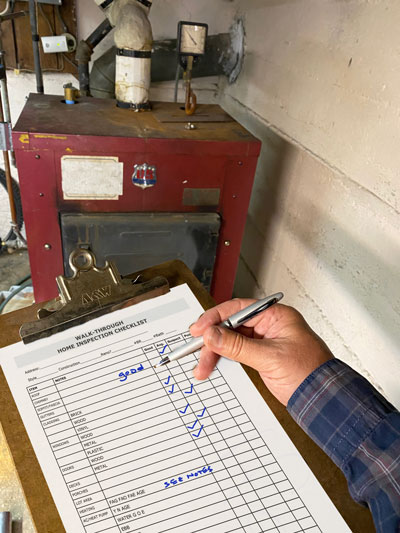How to Prepare Your Home for an Inspection: Tips for Sellers
1. Declutter & Clean Thoroughly
A tidy home allows inspectors to access every area with ease:
- Clear walkways: Remove shoes, toys, and boxes from hallways and stairwells.
- Organize closets & attic: Stack stored items neatly so the inspector can view walls, floors, and insulation.
- Deep-clean kitchens & bathrooms: Wipe down counters, scrub grout lines, and eliminate odors.
Not only does this speed up the inspection, but it also appeals to prospective buyers. For professional staging tips on How to Prepare Your Home for an Inspection, visit our blog.
2. Ensure Safe & Easy Access
Inspectors need to examine all major systems without obstruction:
- Unlock gates, storage rooms, and electrical panels.
- Provide clear path to the HVAC, water heater, and breaker box.
- Replace burnt-out bulbs in attics, basements, and crawl spaces.
If you’re unsure what areas we’ll inspect, check our Services & Fees page for a full list of evaluation points.
3. Test & Document Home Systems
Proactive testing shows buyers you’ve maintained your home:
- HVAC: Change filters and run heating & cooling cycles. Document last service date.
- Plumbing: Flush toilets, run all faucets, and check under sinks for leaks.
- Electrical: Test GFCI outlets and smoke/carbon monoxide detectors per NFPA guidelines.
Keep copies of recent maintenance invoices ready—this builds buyer confidence.
4. Boost Curb Appeal & Exterior Safety
First impressions matter. A well-maintained exterior suggests a cared-for home:
- Trim overgrown shrubs and mow the lawn.
- Repair cracked walkways and loose railings.
- Clean gutters and downspouts to demonstrate proper drainage.
For landscaping ideas that add value, see the EPA’s Green Infrastructure resources.
5. Highlight Recent Upgrades & Repairs
If you’ve invested in improvements, make them known:
- Label new appliances or fixtures with installation dates.
- Provide manufacturer manuals for warranties.
- Show receipts for roof, plumbing, or HVAC work.
This transparency can reduce negotiation issues. Learn more about our add-on inspection services for specialized evaluations (e.g., radon testing, infrared scans).
6. Address Minor Repairs Ahead of Time
Fixing small issues proactively can prevent them from becoming deal-breakers:
- Repair drywall cracks and peeling paint.
- Tighten loose door handles and cabinet hinges.
- Replace leaking faucet cartridges or worn weatherstripping.
Most buyers expect a few touch-ups—showing you’ve handled them demonstrates pride of ownership.
7. Prepare for the Day Of
On inspection day, make the process easy:
- Plan to be available for questions—either in person or by phone.
- Turn on all utilities (water, gas, electricity).
- Keep pets secured away from inspection areas.
Afterward, review your report to understand findings and prepare for any requested repairs.

